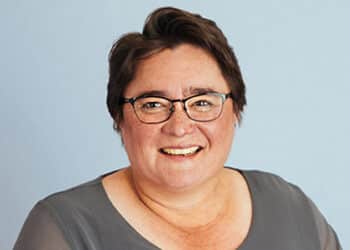Matthew Burgess, director of View Legal, said there have been a number of high-profile families subject to this type of litigation.
“For example, the Smorgon family (see Smorgon v ES Group Operations Pty Ltd & Ors [2021] VSC 608), where a family member, who was not a primary beneficiary of most trusts in the group, applied for access to a vast array of information concerning 18 separate trusts,” Burgess said.
“The trustee resisted disclosure of the documents sought for a number of reasons, including that the documentation would reveal further commercially sensitive and confidential information, be difficult, time-consuming and expensive to collate and be oppressive.”
He said that in denying disclosure in relation to 16 trusts in the group, the court confirmed that it is important to have regard to the essential nature of discretionary trusts. That is, a discretionary trust is not a mere commercial document in which the public may have an interest.
“Rather it is a private transaction, a disposition by the settlor of their own property, ordinarily voluntarily, in the manner which they are entitled to choose. Special cases, for example, where there is evidence of trustee mismanagement, it is proper that these wishes and privacy be respected,” Burgess said.
“The crafting of discretionary trust deeds, and the methodical reading of those deeds, is critical for a range of tax planning objectives.”
He added that ultimately, however, there are key issues that rely on the drafting of a trust deed concerning disclosure requirements to potential beneficiaries.
These include whether the applicant can be said to be a “close beneficiary” – that is, someone who can be expected to either receive distributions from the trust or, at the least, to be a strong candidate to do so.
“Thus, in Smorgon, in relation to two further trusts where the relevant beneficiary was essentially a ‘primary beneficiary’ and there were no clauses in the trust deed restricting disclosure, access to copies of the trust deeds, profit and loss statements and balance sheets was granted by the court,” Burgess said.
“Similarly, the long-running saga in relation to the Rinehart estate planning trust established by Lang Hancock, includes a decision focused on what material may be classified as ‘trust records’ (see Hancock v Rinehart (Trust documents) [2018] NSWSC 1684). While this case focused on the definition of trust records in the context of an outgoing trustee, as opposed to beneficiaries wanting access to trust records, it indicates there are at least 15 separate sources of trust records.”
Furthermore, Burgess said, the decision in Rinehart also highlighted the courts will be influenced by the exact factual matrix, including the conduct of the trustee.
“In the Rinehart decision, the court confirmed it had serious concerns about the incumbent trustee (namely Gina Rinehart), to the extent that the court required the outgoing trustee to go on oath and provide an affidavit verifying delivery of the documents due to the perceived adoption by Gina Rinehart of ‘a misconceived narrow view of what is a ‘document of the Trust’,” he said.
A more recent decision, Land v Prideland Equity Pty Ltd [2024] VSC 557, provided a reminder of the obligations imposed on trustees of discretionary trusts in this area.
This case involved a husband and wife who separated and entered into a binding financial agreement (BFA), that included provisions confirming that the relevant trust was to continue and that the wife was to remain a beneficiary (along with the husband) and the husband and wife were to remain joint guardians and appointors.
The husband was the sole shareholder and director of the trustee company. Among a number of other steps, it was also agreed the trust would be converted to limit the range of other potential beneficiaries to the direct descendants (or bloodline) of the former couple.
“The court application was brought by the wife after the husband, on behalf of the trustee company, refused to provide any requested trust documents or records,” Burgess said.
“The court ordered the wife be provided with the profit and loss account for each accounting period 2011 to 2023, the balance sheet for each accounting period 2011 to 2023, and the list of assets held by the trust for each accounting period from 2011 to 2023.”
Additionally, she was to receive all other accounting records including financial statements, annual trial balances, general ledger, tax returns for each financial year from 2013 to the year ending 30 June 2024 and such documents as exist for the current financial year.
This included any minutes of meetings of the trust (but not to the extent they include any evidence of the decision-making process in the exercise of the trustee’s power to distribution), any variations to the trust deed and any amendments to that deed.
“In making the order the court also confirmed an object of a discretionary trust has a prima facie entitlement to inspect and copy all trust documents, subject to considerations of confidentiality and accepted limitations on the right to documents evidencing the exercise of trustee discretion (see Deutsch v Trumble [2016] VSC 263),” Burgess said.
“It also noted that the issues the court should evaluate in assessing any application for disclosure were (as set out in Erceg v Erceg [2017] 1 NZLR 320) the documents that are sought, the context for the request and the objective of the beneficiary in making the request, as well as the nature of the interests held by the beneficiary seeking access.”
It continued that the court should also evaluate whether there are issues of personal or commercial confidentiality, whether there is any practical difficulty in providing the information, whether the documents sought to disclose the trustee’s reasons for decisions made by the trustee, the likely impact on the trustee and the other beneficiaries if the disclosure is made, and the likely impact on the settlor and the third parties if the disclosure is made.
The court had to decide whether disclosure could be made while still protecting confidentiality and whether safeguards could be imposed on the use of the trust documentation.
“The wife was clearly a ‘close beneficiary’ (as explained in Smorgon) as she was named as a primary beneficiary in the trust deed, and was the joint guardian and appointor. Furthermore, she was confirmed under the BFA as to receive returns from trust investments.,” Burgess said.


